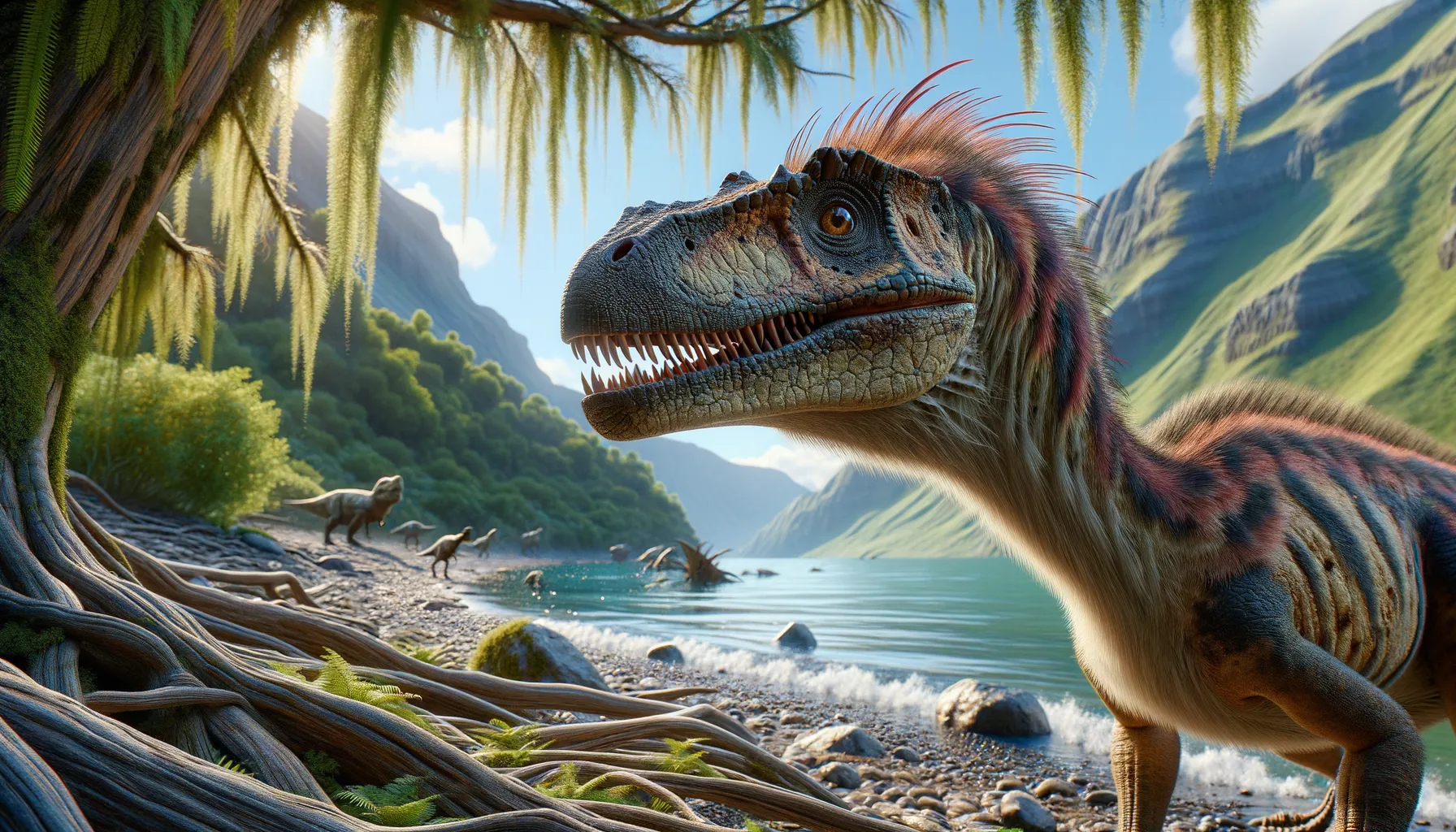
Koparion
A small star of the Jurassic age.
Period
Jurassic
Length
Around 0.7 meters long.
Height
About 0.3 meters tall.
Weight
Estimated at 0.5 kg.
Koparion is a small dinosaur from the late Jurassic period, known for being one of the earliest members of the troodontid group. With its small stature and agile movements, it likely played a crucial role in its ecosystem. Discovered in North America, it provides valuable insight into the evolution of bird-like features among theropods. Its unique teeth suggest a varied diet, which has intrigued paleontologists since its first discovery.
Diet
Koparion likely had an omnivorous diet, feeding on small animals, insects, and possibly plants. Its small, serrated teeth indicate it could handle a variety of foods.
Hunting
Its small size and agility suggest it was a quick hunter, possibly preying on insects or small vertebrates. While likely not a top predator, it would have been skilled at catching its prey with precision.
Environmental challenges
Koparion faced challenges such as competition for food with other small theropods and mammals of its time. It also lived in a period of significant volcanic activity, which could alter its habitat rapidly. Climatic fluctuations in the late Jurassic might have impacted its food sources, requiring adaptability to changing environments. The need to evade larger predators like sauropods was also a persistent challenge.
Speed
Likely agile given its small size.
Lifespan
Probably lived for several decades.
First discovery
Found in Utah in 1994.
Fun Facts
- Koparion is a small dinosaur whose name means 'little ladle' because of its unique jawbone shape.
- It lived during the Late Jurassic period, around 155 million years ago.
- Koparion fossils were discovered in the Morrison Formation of Utah, USA.
- This dinosaur is known mostly from its teeth, which is why scientists know relatively little about its overall appearance.
- Koparion might have been a carnivore, possibly feeding on small animals or insects.
- It was a small dinosaur, suggesting it might have been a fast and agile creature.
- Koparion is significant because it is one of the earliest known troodontids, a group of bird-like dinosaurs.
Growth and Development
Koparion likely went through rapid growth phases typical of small theropods, reaching adulthood quickly to gain independence. Its development may have been influenced by environmental pressures, requiring adaptations for survival. Fossil evidence suggests similar species grew rapidly in early life stages to outpace predation threats.
Habitat
Koparion inhabited what is now North America, in environments ranging from forested areas to floodplains. These habitats provided ample vegetation and small prey for its diet. Its environment was dynamic, with periodic wet and dry seasons influencing available resources.
Interaction with other species
Koparion interacted with a variety of dinosaurs, both large and small, indicating a complex ecological web. Its small size likely positioned it as both predator to lesser creatures and prey to larger theropods. It may have had symbiotic relationships with certain species, aiding in insect control or seed dispersal.
Natural lifespan
Koparion likely had a life expectancy of up to 20 years.
Reproduction
Koparion probably laid eggs, like most theropods, with nesting sites carefully selected for safety. Its reproductive behavior might have involved some parental care, a trait observed in similar small theropods. Fossil finds indicate potential communal nesting behaviors.
Social behaviour
Koparion may have shown some degree of social behavior, especially during nesting or in hunting camps. Communication could have been essential for survival and rearing of young. Its social interactions likely helped in resource localization and predator evasion.
Fossil locations
Koparion fossils have been primarily found in Utah, providing significant insights into its ecological niche. The Morrison Formation, rich in Jurassic fossil diversity, has yielded numerous bones of this diminutive species. These finds aid in reconstructing the biodiversity of Jurassic North America.
